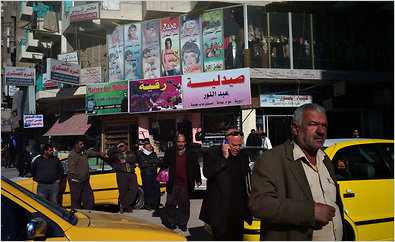Iraq: Arrest Warrant, Bombings a Bad Omen After US Withdrawal
An arrest warrant against former Vice President Hashemi, a Sunni Muslim,
by the largely Shiite central government on terrorism charges and a
string of powerful bombings in Baghdad today mark the beginning of the
serious political and security challenges the Iraqi government faces in
the wake of the withdrawal of US troops. Without international troops to
separate hostile factions, minor incidents could spin out of control and
lead to renewed ethnic conflict.

For most of the last decade, Iraq occupied center stage in the Arab world, as it was swiftly invaded and occupied by American forces in 2003 before being wracked by the insurgency that sprang up in opposition and then by waves of sectarian killing that grew into something close to a civil war.
Since the bloodshed peaked in 2006, order has gradually been restored, though violence remains high by any but wartime standards. The fairest elections in the country’s history in March 2010 led to the creation of a government of national unity, although after only eight months of political stalemate that played out mostly along sectarian lines.
On Dec. 15, 2011, the American military formally ended its mission in Iraq, one that cost the lives of 4,487 service members, with another 32,226 wounded in action. The closing ceremony in Baghdad sounded an uncertain trumpet for a war that was started to rid Iraq of weapons of mass destruction it did not have. It now ends without the sizable, enduring American military presence for which many officers had hoped.
Even after the formal withdrawal, the military still has two bases in Iraq and roughly 4,000 troops. At the height of the war in 2007, there were 505 bases and more than 170,000 troops. More than one million service members served in Iraq during the course of the conflict.
The war was started by the Bush administration in March 2003 on arguments that Iraq had weapons of mass destruction and had ties to Al Qaeda that might grow to an alliance threatening the United States. As the absence of unconventional weapons proved a humiliation for the administration and the intelligence community, the war effort was reframed as being about bringing democracy to the Middle East.
And, indeed, there was euphoria among many Iraqis at an American-led invasion that toppled Saddam Hussein. But the support soon soured amid a growing sense of heavy-handed occupation fueled by the unleashing of bloody sectarian and religious rivalries. And the American military presence in Iraq, viewed as an occupation across the Muslim world, also hampered Washington’s ability to cast a narrative from the United States in support of the Arab Spring uprisings.
The end of America’s military involvement reflected the messy, sectarian state of Iraqi politics — both in terms of the political forces that led to America’s withdrawal and in the sectarian political strains that boiled over the day after the last troops had left.
Widening Sectarian and Political Conflicts
The Shiite-dominated government issued an arrest warrant for the Sunni vice president, Tariq al-Hashimi, one of the country’s most prominent Sunni leaders, accusing him of running a personal death squad that assassinated security officials and government bureaucrats. Mr. Hashimi denied the charges and accused Mr. Maliki’s government of using the country’s security forces to persecute political opponents, specifically Sunnis.
Almost as significant as what Mr. Hashimi said was where he said it: in Erbil, the capital of the semi-autonomous northern region of Kurdistan. Because of the region’s autonomy, Mr. Maliki’s security forces cannot easily act on the warrant. Mr. Hashimi said he would not return to Baghdad, effectively making him an internal exile.
The following day Mr. Maliki threatened to abandon the American-backed power sharing government created a year ago, and ward Kurdish leaders that there would be “problems’' if they did not hand over Mr. Hashimi.